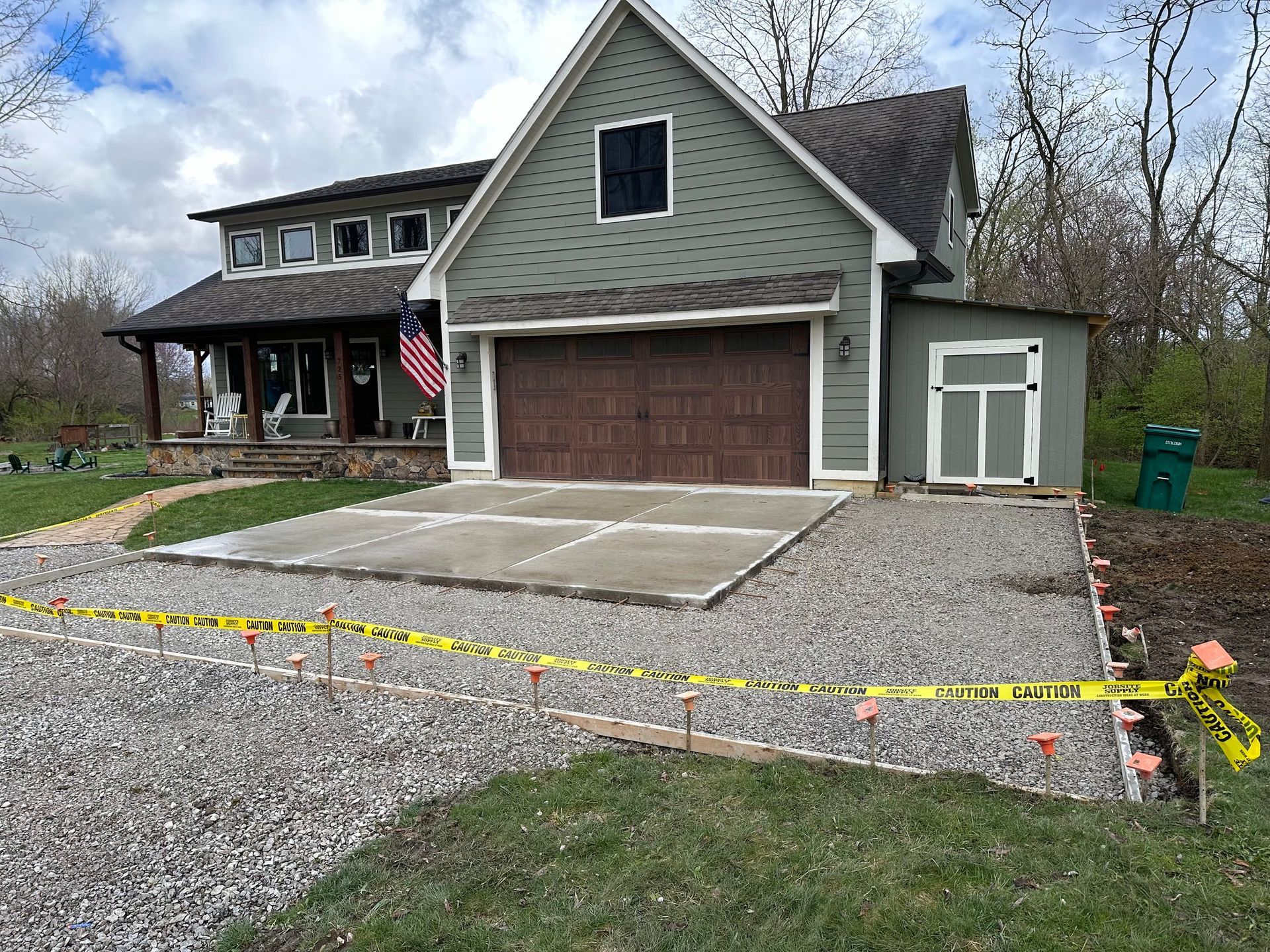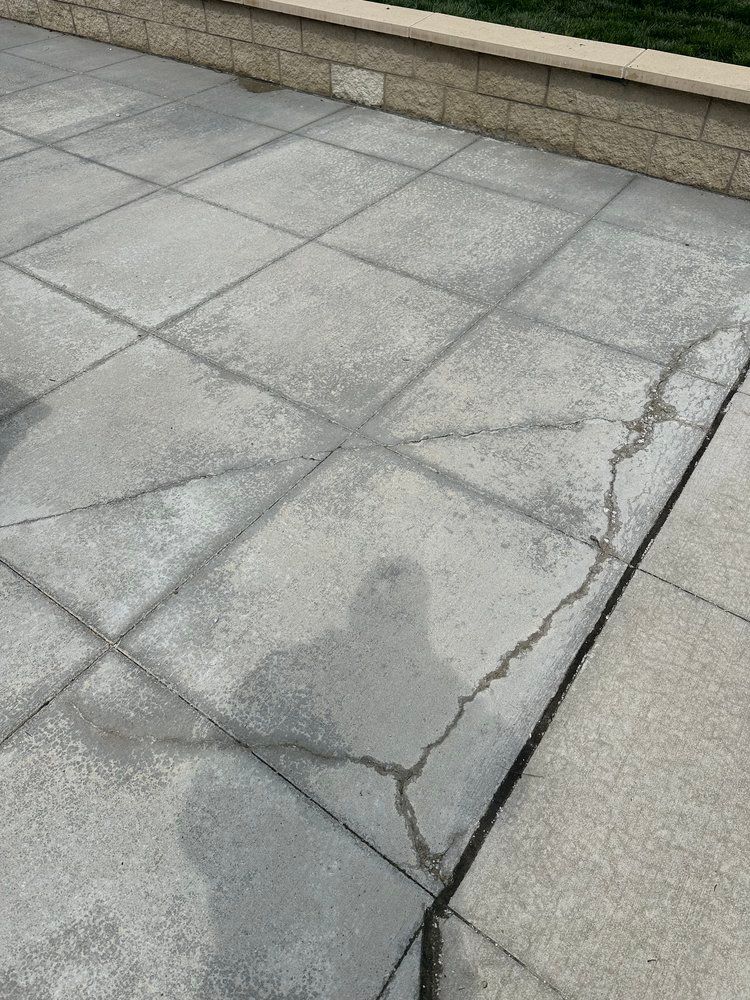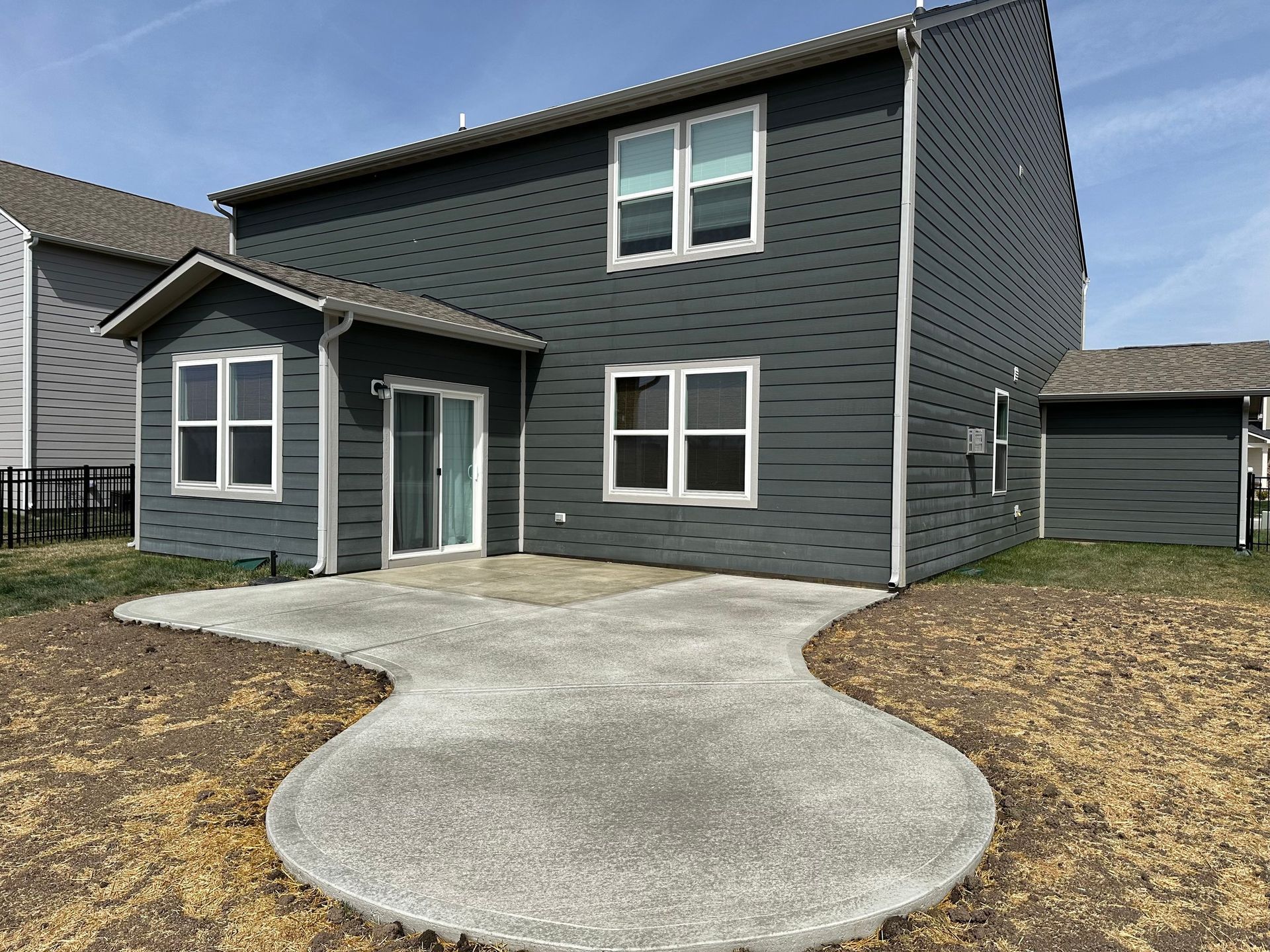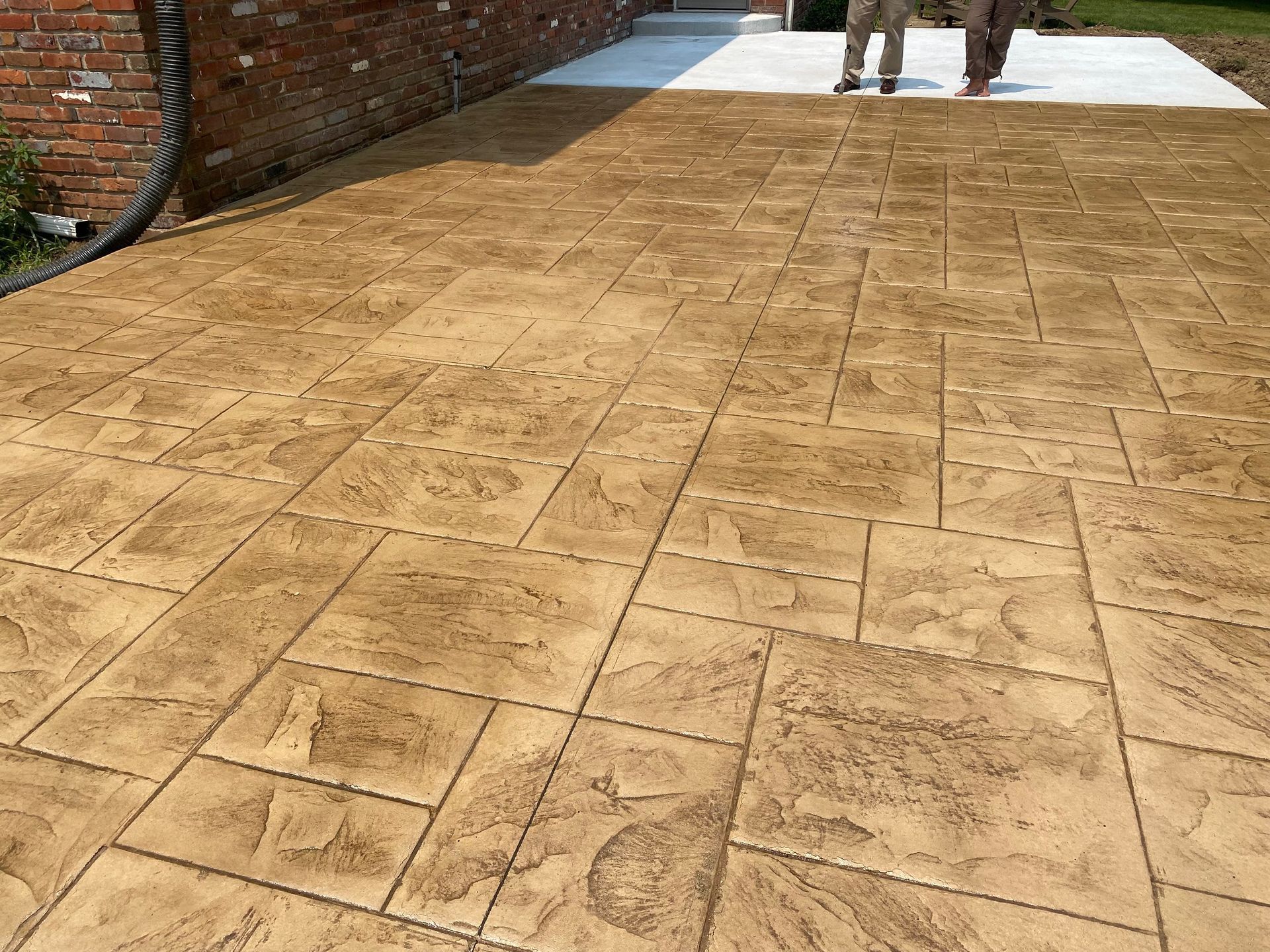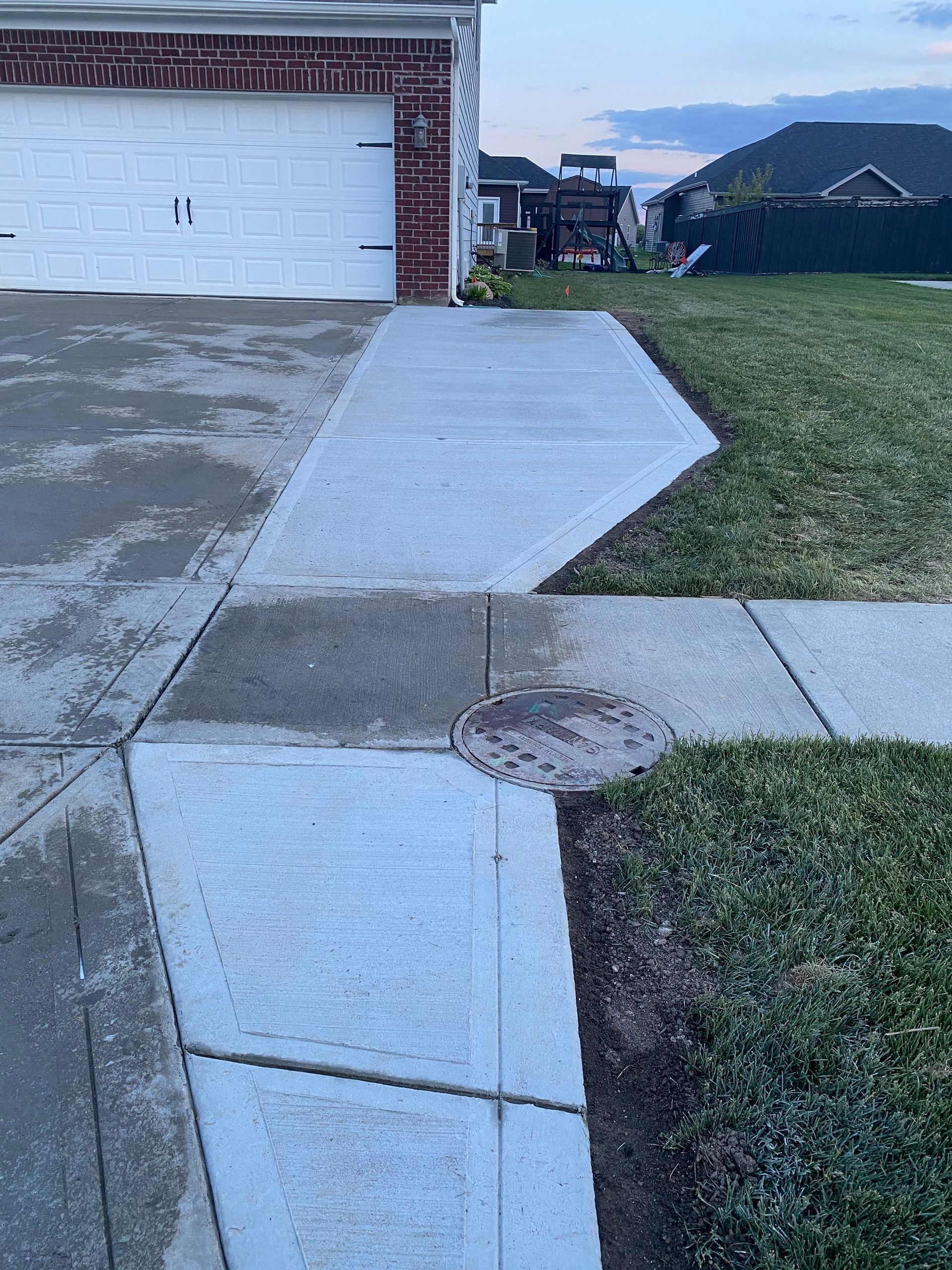Stamped or Broomed?
The Difference Between Stamped Concrete and Broom Finish Concrete
When it comes to creating a beautiful outdoor patio, walkway, or other concrete feature, there are a variety of options that homeowners can choose from. Two popular choices include stamped concrete and broom finish concrete, each offering its own unique advantages. In this blog post, we'll break down the differences between these two types of concrete so you can decide which one is right for your home or business.
Stamped Concrete: Stamped concrete is a type of decorative concrete which features an imprinted pattern or texture. The most common imprints used are stone, brick and tile patterns. This type of concrete provides an elegant look and can be used to mimic real stones without having to buy expensive materials. It's also a great solution for getting more durability than natural stone without sacrificing too much style.
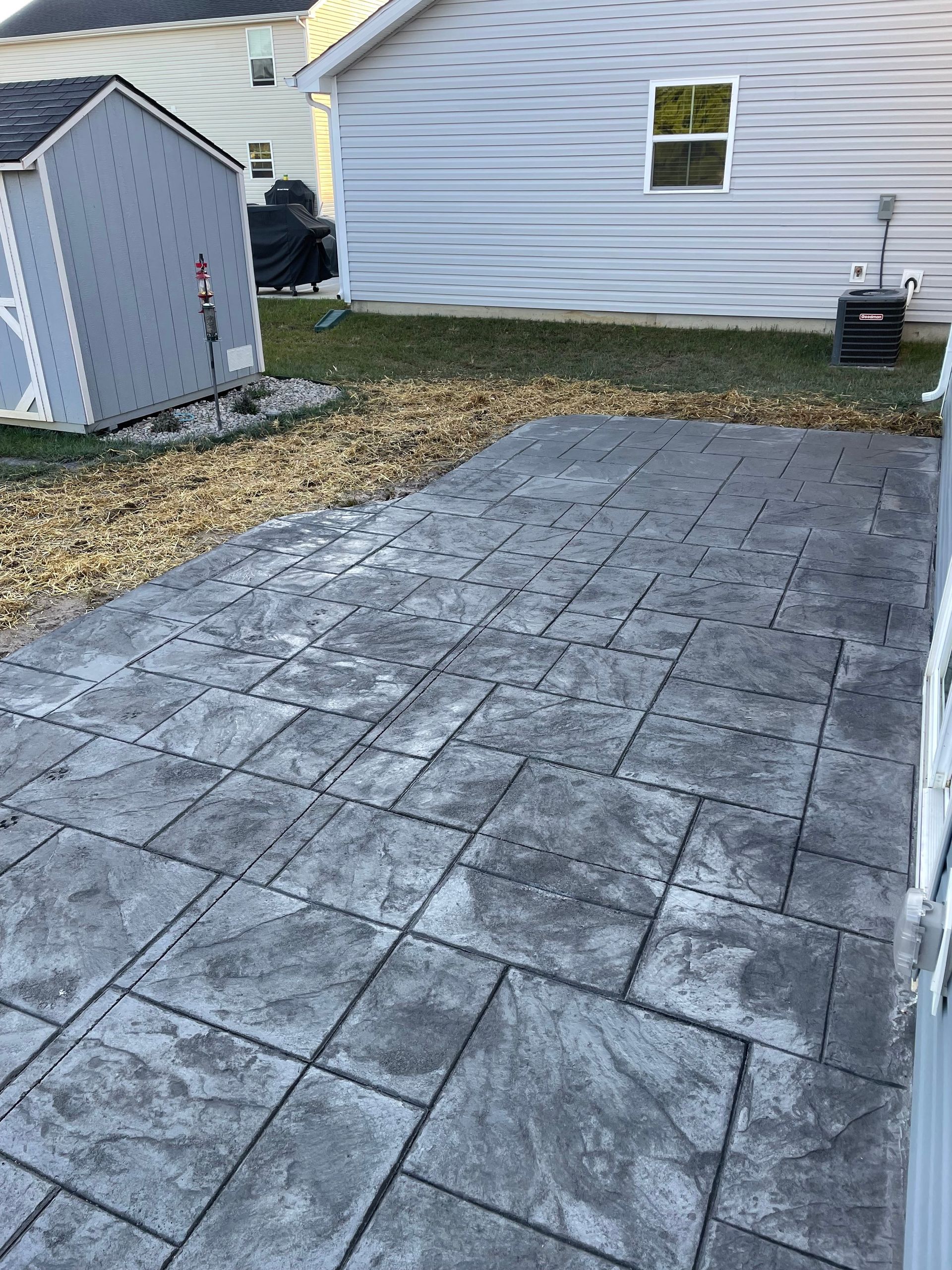
However, stamped concrete does come with some drawbacks when compared to broom finish concrete. Firstly, it's more expensive due to the need for special tools and equipment for the installation process. Secondly, it requires more upkeep in order to keep its original look; this includes sealing the surface every two years or so in order to prevent cracking and staining.
Broomed Finish Concrete: In contrast to stamped concrete is broomed finish concrete which gives an unpatterned finish by applying a push broom across wet cement while it is still setting up in order to create texture in the surface. This method produces a long lasting yet less appealing finished product compared with stamped concrete; however it's much cheaper since there's no need for additional tools or equipment during installation process.
In addition to being cost effective, broomed finish concrete is also relatively low maintenance since all you really need do is periodically clean it using mild soap and water; however you should avoid using pressure washers as they may damage the sealant protecting the surface from moisture damage if present on your slab. Also regular sealing isn't necessary but should be done about every five years in order for maximum protection against moisture damage as well as preventing weeds and grasses from growing through cracks due to dry weather conditions.
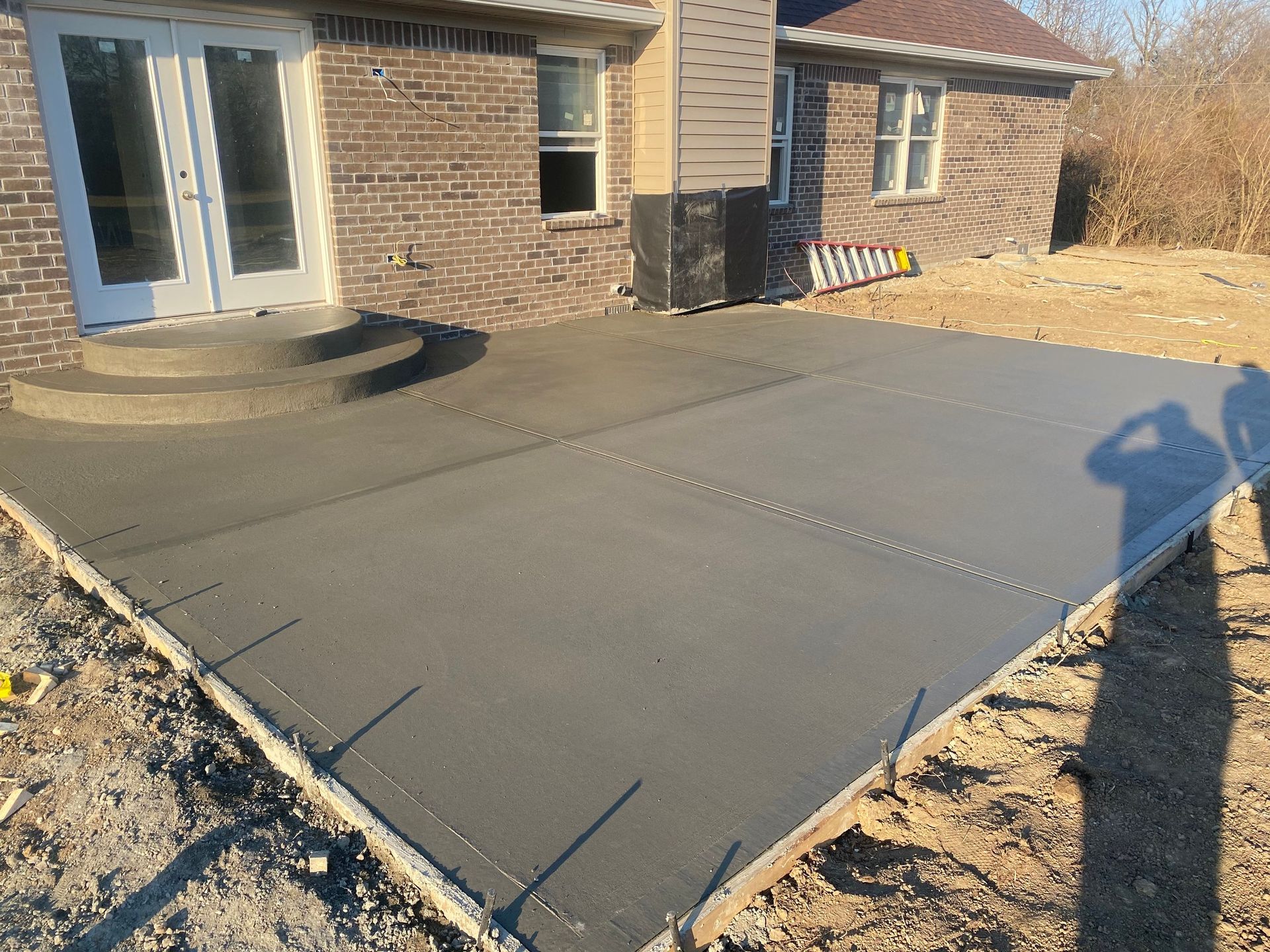
Conclusion: Both types of outdoor concrete bring their own unique benefits when creating a beautiful patio or walkway within your home or business space; however the differences between them can help you make an informed decision when deciding which one is right for you based on budgeting needs as well as aesthetic desires. Stamped concretes provide an elegant look that mimics real stones but require more upkeep while broom finish concretes offer a less appealing yet cost effective option with minimal maintenance requirements making them both great alternatives when constructing outdoor living spaces that add value and beauty at the same time!
